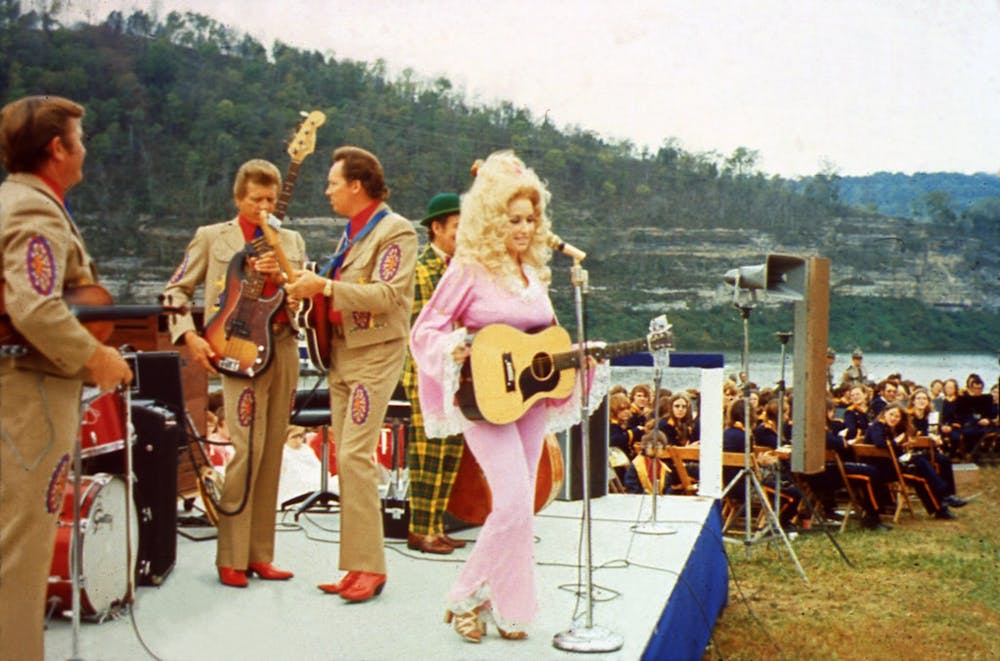This year, The Economist released an article with an astounding statistic: around 150 million Americans listen to country music at least once a month. That’s around 45 percent of the whole country jamming out to guitar twangs and hollering vocals.
July saw country songs occupy the top three slots of the Billboard Top 100 for the first time ever. For seven years in a row, as of 2022, the growth in country music streaming has surpassed that of the “industry average for all genres,” according to a report by AARP.
But country music didn’t start anywhere close to the multi-billion-dollar industry we know today. The current iteration of country has been formed over decades of change and the incorporation of musical styles both old and new, making it hard to identify an exact starting point.
Country music’s origins
The earliest forms of what is now considered country music date back to traditional folk music. Settlers in the mountains of southern Appalachia had long played folk songs on fiddles, but it wasn’t until the late 1910s and early 1920s that these fiddle players started to record their songs. In 1923, Fiddlin’ John Carson recorded some of the first country songs with vocals and lyrics —- “The Little Old Log Cabin in the Lane” and “The Old Hen Cackled and the Rooster’s Going to Crow.”
The record almost immediately sold out at a fiddler’s convention and is considered country music’s first hit record. The term ‘country music,’ however, still didn’t exist.
The music Carson and similar artists recorded appealed to America’s white, rural audiences, with regular radio programs airing dedicated to this new style.
The two most prominent programs were Chicago’s “National Barn Dance” and Nashville’s “Grand Ole Opry,” airing in 1924 and 1925 respectively and attracting many listeners who wanted more of this new twangy, catchy sound. But the infant genre still needed its first hitmaker.
Enter Jimmie Rodgers — hailed as the ‘father of country music.’
His appropriately named “Blue Yodel #1” topped the Victor Record charts for an astounding fourteen weeks and was his biggest hit. His yodeling was his chief appeal and ‘America’s blue yodeler’ became one of the first country stars signed to a record.
From here onwards, country music truly hit its stride.
Country music’s progression
The 1930s saw the ‘singing cowboys’ of Hollywood find their way into listeners’ hearts nationwide. Part movie stars, part singers, stars such as Gene Autry started to bring elements of ‘cowboy music’ into country music with hits like “Back in the Saddle Again,” “At Mail Call Today” and “That Silver-Haired Daddy of Mine.”
The 1940s further developed the country sound as well — with the crisp backbeats and steel guitars of honky-tonk music, all thanks to Ernest Tubb. The ‘Texas Troubadour’ and his massive hit single “Walking the Floor Over You” thrust honky-tonk into the mainstream.
Hank Williams and Lefty Frizell joined Tubb in stardom and put out hit after hit for legions of loyal fans.
But it wasn’t just honky-tonk that defined this new exciting era of country music. The ‘50s and ‘60s saw the ‘Nashville Sound’ movement — centered in its namesake city, which was by now the center of the country music industry and home to stars such as Jim Reeves, Brenda Lee and Patsy Cline.
The ‘Nashville Sound’ was far from the rural, traditional roots of country music. Record executives and singers traded fiddles for violins and rough twang for soft piano.
Was it homegrown and folky like country music of the ‘20s and ‘30s? No.
Did it make money? Absolutely — and the number of country-airing music stations soared to around five hundred by the end of the ‘60s.
The outlaw movement
After nearly two decades of the ‘Nashville sound,’ the ‘70s heralded another change in country’s direction.
This was the ‘outlaw movement’: a collection of independent country stars, including Willie Nelson and Waylon Jennings, disillusioned with the Music City’s monopoly over country .
“Rhinestone suits and new shiny cars, it’s been the same way for years,” Waylon Jennings sings in his 1975 album “Dreaming My Dreams.” The lyrics reflect the discontent of both Jennings and the wider outlaw movement with the ‘Nashville Sound’s’ commercial dominance.
“We need to change,” Jennings sings.
But despite its popularity — “Dreaming my Dreams” topped country charts upon its June 1975 release — outlaw country music was soon overshadowed by the increasing fusion of country with both mainstream rock and pop.
Original country instruments were replaced by instruments like electric guitars — rock music hallmarks.
While new country figureheads like Dolly Parton and Johnny Lee made massive hits land on both pop and country charts, outlaw’s popularity began to fade and country music increasingly intertwined with other popular genres.
Country music today
Through the 2000s and into today, the incorporation of pop and rock elements into popular country music has reached a fever pitch. Spurred by wider national audiences, stars such as Shania Twain and Garth Brooks joined Parton in the 90s to usher in the pop-country era.
Breakout stars Tim McGraw and Faith Hill further set the stage for today’s country — still unmistakable as country music tones, but incredibly different from its origins a little over a century ago.
Multiple styles of country music both exist and have sizeable fanbases in 2023, but the pop-country sound continues to top charts — country-pop superstar Morgan Wallen’s album “One Thing at a Time,” as of this July, spent a whopping fifteen weeks at number one on the Billboard 100.
The last century has seen country music rise out of rural Appalachia, gain popularity thanks in part to Hollywood stars and catchy honky-tonk tunes and gradually develop into the mainstream sound that dominates the genre today.
With all the evolution that this distinctively American sound has gone through, country music is bigger than ever.
This article was edited by Sara Winick, Patricia McGee and Abigail Pritchard. Copy editing done by Isabelle Kravis and Charlie Mennuti.





